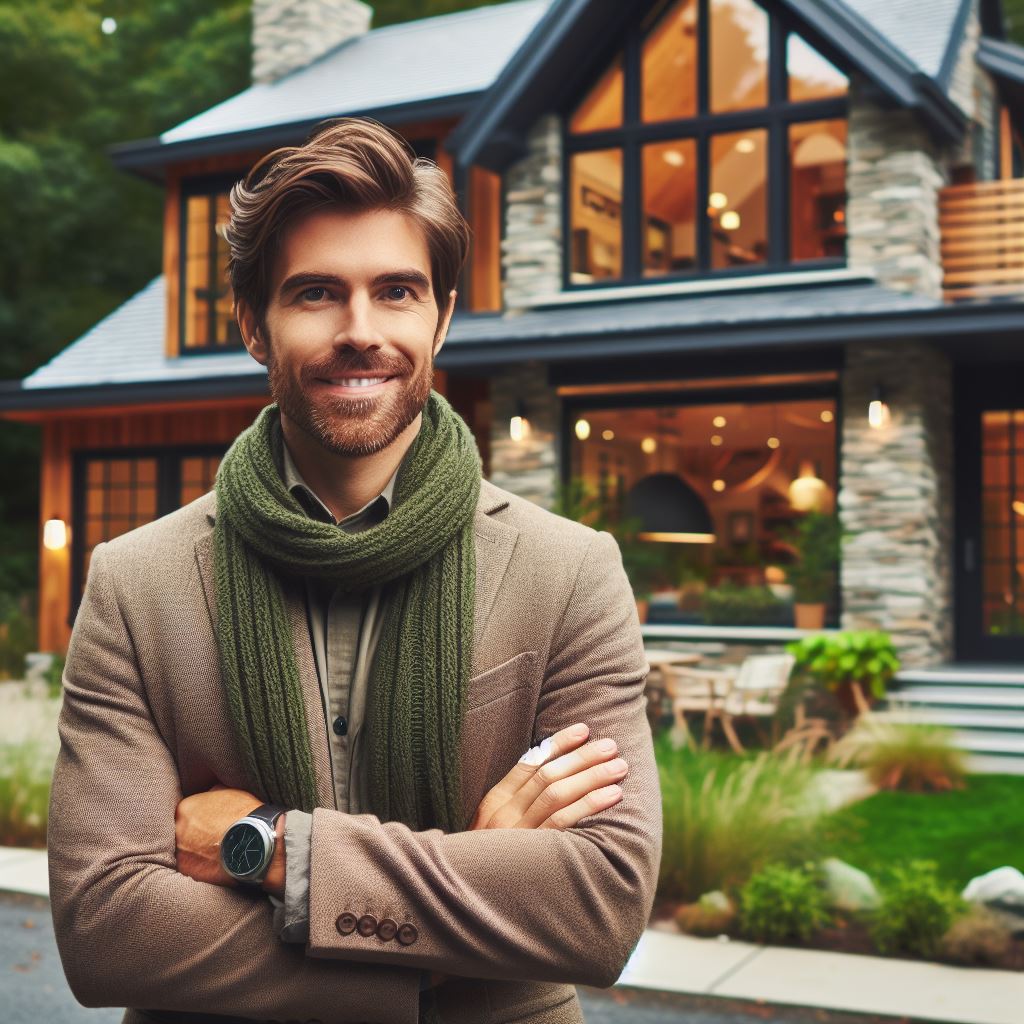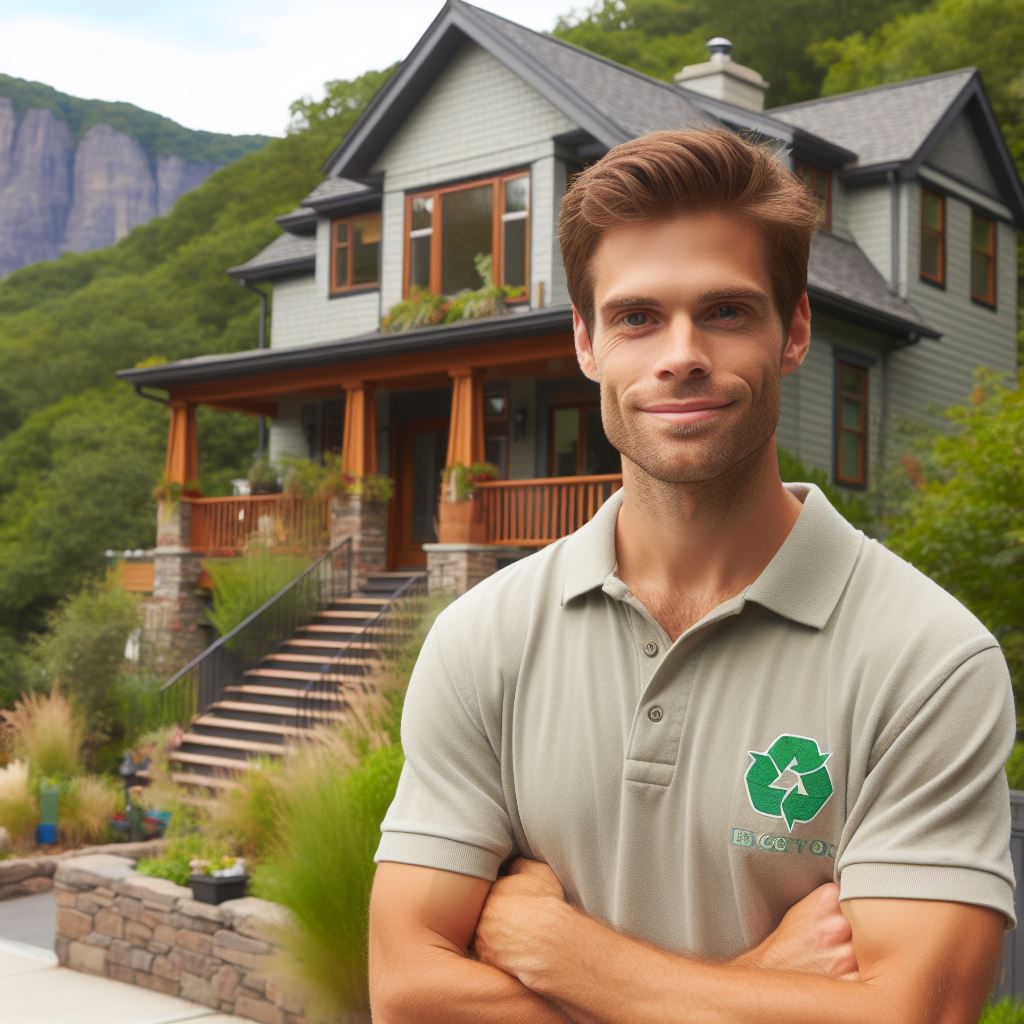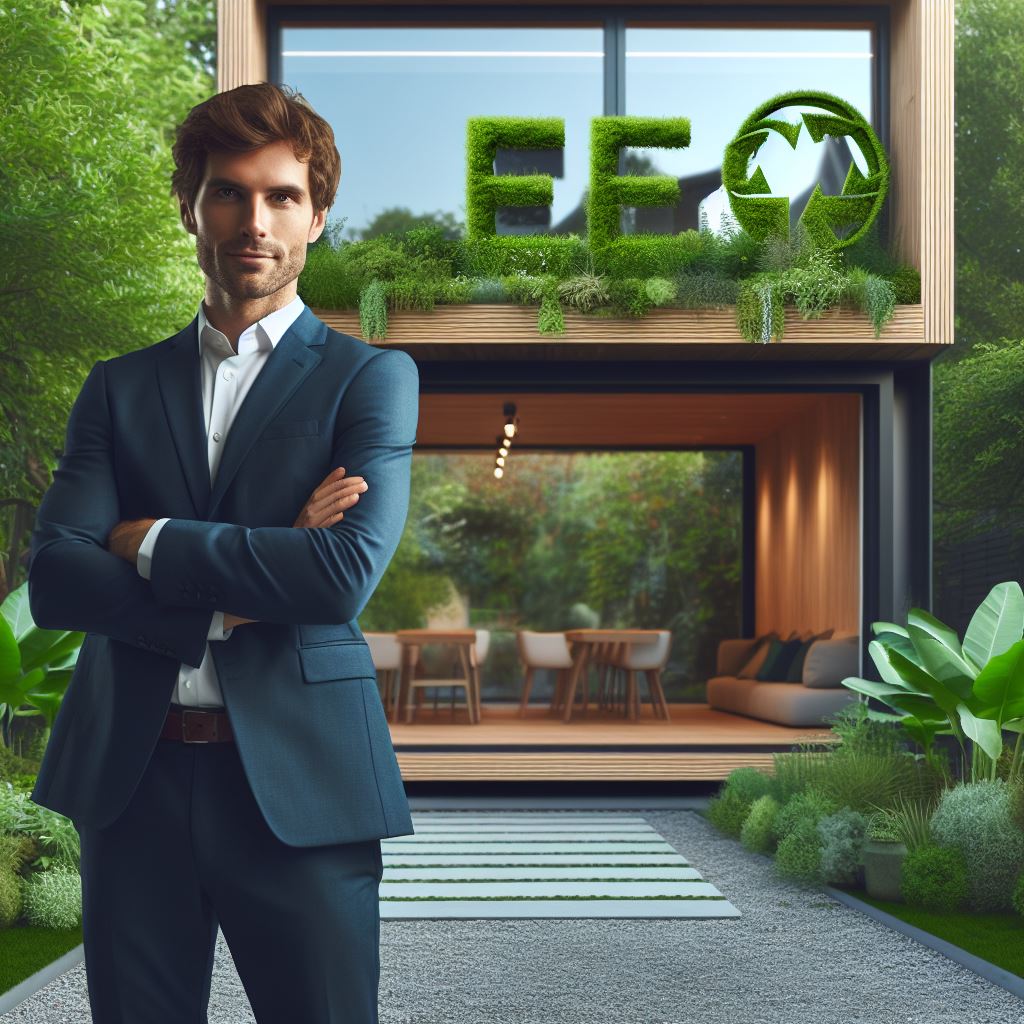Introduction
Eco investment refers to the practice of allocating resources towards projects and initiatives that have a positive impact on the environment.
In recent years, New York has witnessed a significant surge in the adoption of green strategies, making it a leading city in the green investment sector.
The importance of sustainability in the real estate industry cannot be understated.
With increasing concerns about climate change and environmental degradation, it has become crucial for developers and investors to prioritize eco-friendly practices.
Integrating sustainable features in buildings not only lowers energy consumption and reduces carbon emissions but also enhances property value and attracts environmentally conscious tenants and buyers.
New York’s green trend exemplifies the shift towards a more sustainable future.
The city’s government has implemented various initiatives, such as the NYC Carbon Challenge and the Energy Code.
These programs have encouraged property owners to invest in energy-efficient technologies and renewable energy sources.
Additionally, financial incentives, like tax breaks and grants, have further enticed developers and investors to prioritize eco-friendly projects.
By embracing eco investment and promoting sustainable practices, New York is not only improving its environmental performance but also positioning itself as a global leader in green real estate.
The city’s commitment to sustainability not only benefits the environment but also stimulates economic growth by creating new job opportunities and attracting investment.
Moreover, it sets an example for other cities and regions to follow in the pursuit of a greener and more sustainable future.
In essence, eco investment plays a crucial role in shaping the future of real estate.
New York’s green trend showcases the potential benefits of sustainable practices, both for the environment and the economy.
By prioritizing eco-friendly projects, the city is leading the way towards a more sustainable and resilient future.
New York’s Green Trend
Overview of New York’s commitment to sustainability
New York City, often regarded as one of the most vibrant and progressive cities in the world, is also leading the way in sustainability efforts.
The city has made a strong commitment to becoming more eco-friendly, embracing green practices in various sectors.
Government initiatives promoting green practices
- Green building codes and regulations: The government of New York has implemented stringent green building codes and regulations to ensure new constructions and renovations adhere to sustainable practices.
The city aims to reduce carbon emissions and increase energy efficiency in all buildings. - Incentives for eco-friendly development: In addition to enforcing green building codes, the government provides various incentives to promote and encourage eco-friendly development.
These incentives come in the form of tax credits, grants, and other financial benefits.
Growing demand for green buildings in the market
New York’s commitment to sustainability aligns with a growing demand for green buildings in the real estate market.
Both commercial and residential properties that prioritize sustainability practices are in high demand.
Consumers are becoming more conscious of the environmental impact of their choices and are actively seeking properties that offer eco-friendly features.
Green buildings not only contribute to a healthier and cleaner environment but also provide long-term cost savings to owners.
Developers are responding to this demand by incorporating green features into their projects.
From energy-efficient appliances to renewable energy sources and green roofs, real estate developers are embracing sustainable design and construction methods.
Moreover, businesses are also recognizing the benefits of occupying green buildings.
Such buildings have been found to enhance employee well-being and productivity.
Many companies are actively seeking office spaces that promote sustainability to attract and retain talent.
In fact, New York City’s green trend is driven by its commitment to sustainability, government initiatives promoting green practices, and the growing demand for eco-friendly buildings in the market.
The city’s efforts towards becoming greener not only benefit the environment but also contribute to economic growth and a higher quality of life for its residents.
Read: Sustainable Living in California’s Market
Benefits of Eco Investment in New York
Eco investment in New York not only has positive effects on the environment but also offers health and wellbeing advantages for occupants and long-term cost savings for investors.
Positive impact on the environment
One of the main benefits of eco investment in New York is its positive impact on the environment.
By adopting sustainable practices, such as using renewable energy sources and implementing energy-efficient technologies, carbon emissions can be significantly reduced.
This reduction contributes to mitigating climate change and improving air quality in the city.
In addition to reducing carbon emissions, eco investment promotes the conservation of natural resources.
Sustainable buildings use materials that are sourced responsibly and have a lower environmental impact.
Water conservation measures, such as rainwater harvesting and efficient plumbing systems, further contribute to preserving New York’s natural resources.
Health and wellbeing advantages for occupants
Eco investment also offers numerous health and wellbeing advantages for occupants of green buildings in New York.
Improved indoor air quality is one of the primary benefits.
Green buildings are designed to prioritize proper ventilation and minimize the presence of volatile organic compounds (VOCs).
This ensures that occupants breathe clean and fresh air, reducing the risk of respiratory illnesses and allergies.
Access to green spaces is another advantage provided by eco investment in New York.
Green buildings often incorporate rooftop gardens, terraces, and communal parks.
These green spaces offer a respite from the urban environment, providing opportunities for relaxation, exercise, and increased social interaction.
Studies have shown that access to green spaces has a positive impact on mental health, reducing stress and improving overall wellbeing.
Long-term cost savings for investors
Investing in eco-friendly buildings in New York can result in significant long-term cost savings for investors.
Energy efficiency measures play a crucial role in reducing operational expenses.
Sustainable buildings use advanced insulation, efficient HVAC systems, and smart technologies to minimize energy consumption.
This leads to lower utility bills and increased savings over time.
Tax incentives and lower operational costs further contribute to the financial benefits of eco investment.
Government and local authorities offer tax credits and rebates for building owners who adopt sustainable practices.
Additionally, green buildings require less maintenance and have longer lifespans, resulting in reduced operational costs in the long run.
In short, eco investment in New York has numerous benefits.
It not only positively impacts the environment by reducing carbon emissions and conserving natural resources but also provides health and wellbeing advantages for occupants through improved indoor air quality and access to green spaces.
Moreover, investing in eco-friendly buildings offers long-term cost savings for investors through energy efficiency measures, tax incentives, and lower operational costs.
It is a win-win situation for both the city and those involved in eco investment.
Read: Florida’s Eco-Friendly Property Boom

Noteworthy Green Projects in New York
New York City, the epitome of urban living, is also leading the way in embracing eco-friendly initiatives.
As sustainability becomes more important, New Yorkers are taking steps to create a greener future through various noteworthy projects.
Sustainable building examples
- LEED-certified buildings: New York City boasts numerous buildings that have earned Leadership in Energy and Environmental Design (LEED) certification.
These buildings meet stringent criteria for energy efficiency, water conservation, and sustainability. - Net-zero energy buildings: The city is also home to innovative net-zero energy buildings.
These structures generate enough renewable energy to meet their own consumption needs, minimizing the reliance on the grid and significantly reducing carbon emissions.
Eco-friendly communities and neighborhoods
Green roofs and urban gardens
New York has embraced the idea of utilizing rooftops for eco-friendly purposes.
Through the installation of green roofs, many buildings now contribute to energy conservation, stormwater management, and urban agriculture.
Urban gardens have also become popular, providing residents with fresh produce and green spaces.
Bike-friendly infrastructure
Recognizing the importance of sustainable transportation, New York City has developed an extensive bike-friendly infrastructure.
This includes dedicated bike lanes, bike-sharing programs, and bike parking facilities.
The city encourages residents to choose cycling as a mode of transportation, reducing traffic congestion and carbon emissions.
These noteworthy green projects in New York showcase the city’s commitment to sustainability and serve as shining examples for other urban areas.
By adopting green building practices and creating eco-friendly communities, New York is paving the way towards a greener future.
Read: Denver Market: High Altitude Investment Tips
Challenges and Future Outlook
Despite the numerous advantages of eco investment in New York, there are several existing barriers that hinder its widespread adoption and growth.
Existing barriers to eco investment in New York
- High upfront costs: One of the biggest challenges faced by investors looking to embrace eco-friendly practices is the high initial investment required.
Implementing energy-efficient technologies and sustainable design features often involves significant upfront expenses, which can deter many potential investors. - Limited availability of green financing options: Another obstacle to eco investment in New York is the limited availability of green financing options.
Traditional lenders may be hesitant to offer loans for eco-friendly projects due to perceived risks or lack of expertise in evaluating their long-term financial viability.
Potential solutions and strategies for overcoming challenges
- Collaboration between public and private sectors: To encourage eco investment, collaboration between the public and private sectors is crucial.
Government agencies, local authorities, and financial institutions should work together to create favorable policies, incentives, and loan programs specifically tailored to support sustainable development projects. - Development of innovative financing models: The development of innovative financing models can also help overcome barriers to eco investment.
Public-private partnerships, green bonds, energy performance contracts, and community-based financing are examples of creative approaches that can provide investors with alternative funding sources and reduce the financial burden.
Predictions for the future growth of green real estate in New York
Despite the current challenges, the future outlook for eco investment in New York’s real estate market is promising.
The growing awareness of environmental sustainability and the urgent need to combat climate change are driving forces that will likely lead to increased demand for green buildings and eco-friendly practices.
In recent years, there has been a notable shift in consumer preferences towards environmentally conscious products and services.
This trend is likely to extend to the real estate sector, where eco-friendly buildings offer numerous benefits such as energy and cost savings, improved indoor air quality, and enhanced marketability.
Additionally, government initiatives and policies aimed at promoting sustainable development and reducing carbon emissions will further boost the growth of green real estate in New York.
Incentives such as tax credits, grants, and expedited permitting processes can provide the necessary impetus for investors to embrace eco investment and incorporate sustainable practices into their projects.
Furthermore, advancements in technology and innovations in green building materials will continue to drive the expansion of eco investment.
As more cost-effective and efficient solutions become available, the barriers related to high upfront costs are likely to diminish, making eco-friendly practices more accessible and appealing to a wider range of investors.
In a nutshell, while challenges exist, the future of eco investment in New York’s real estate market is bright.
Through collaboration, innovative financing models, and supportive government policies, the barriers can be overcome, paving the way for significant growth in green real estate and a more sustainable future.
Read: Rocky Mtn Green Homes: Sustainable Living
Conclusion
New York City has witnessed a significant surge in eco-friendly initiatives, particularly in the real estate sector.
Developers and investors alike have embraced sustainable practices to create a greener and more environmentally friendly city.
Investing in green real estate projects in New York has proven to be lucrative, not only in terms of financial returns but also in contributing positively to the environment.
The demand for eco-friendly buildings is on the rise, making it a favorable opportunity for investors.
As a reader, if you are interested in eco investment, now is the time to act.
Join the movement towards sustainability and explore the various opportunities available in New York City’s real estate market.
Take a step towards making a positive impact on the environment while securing your future.




